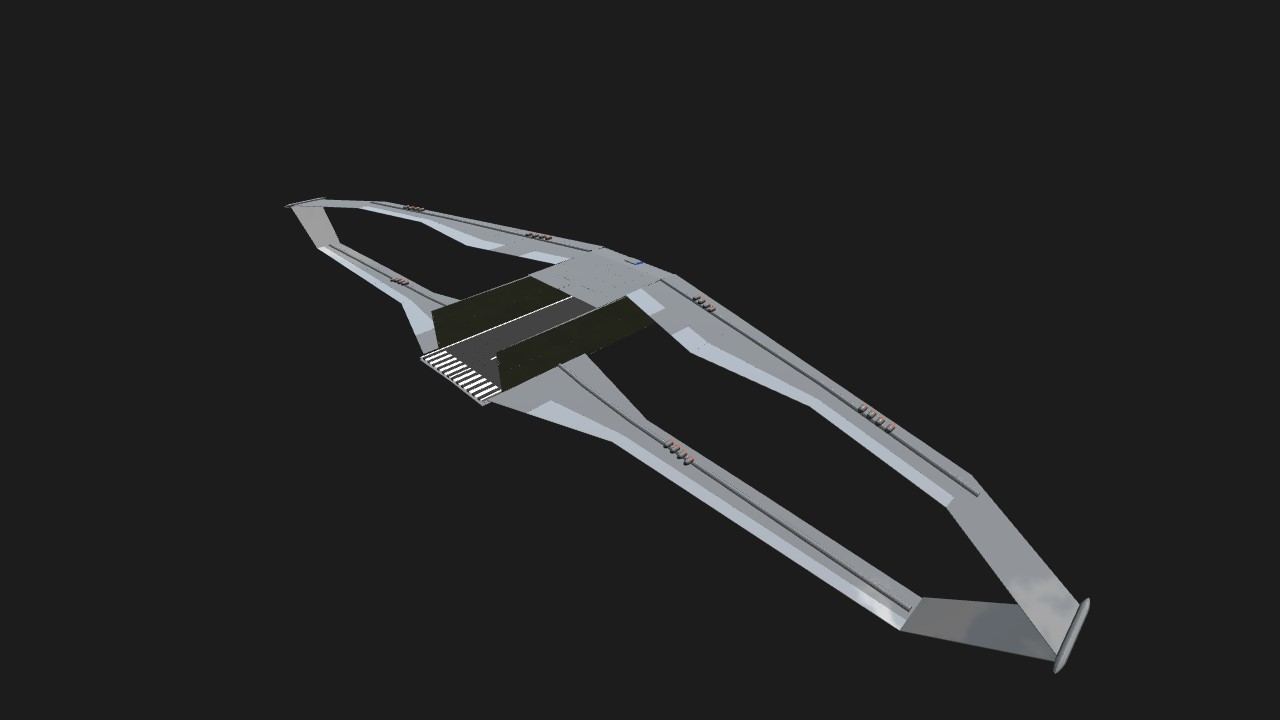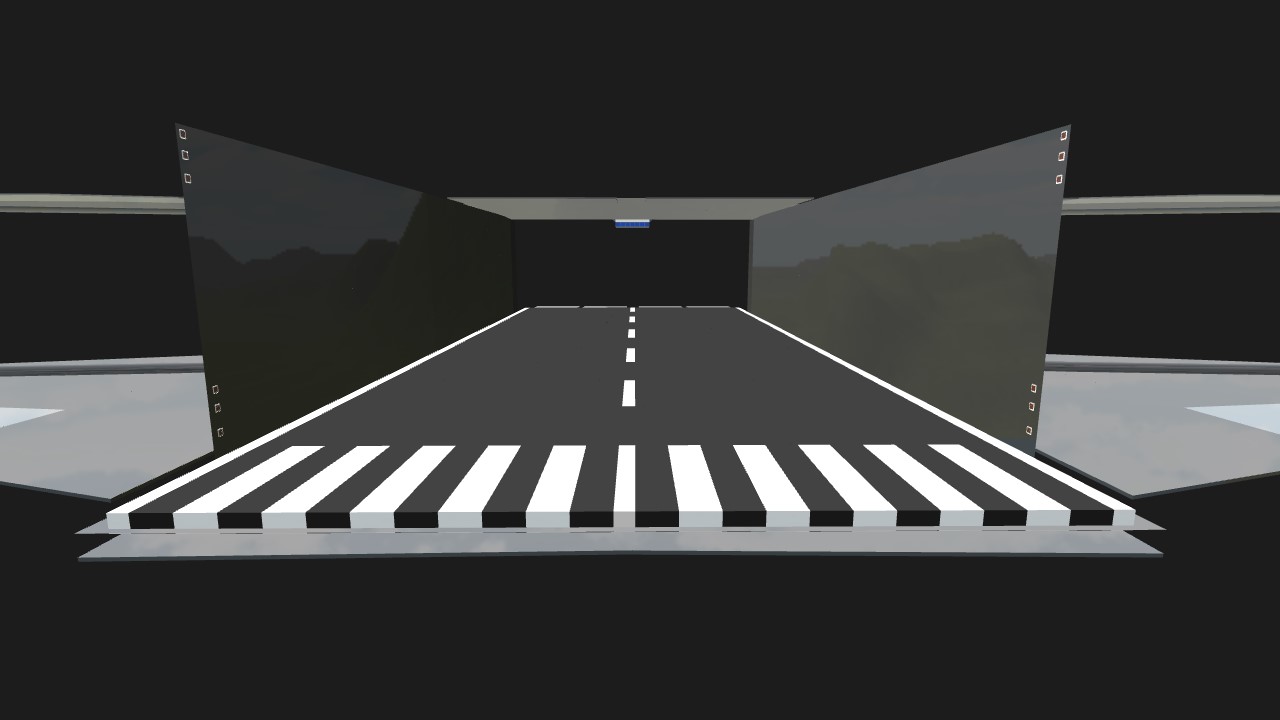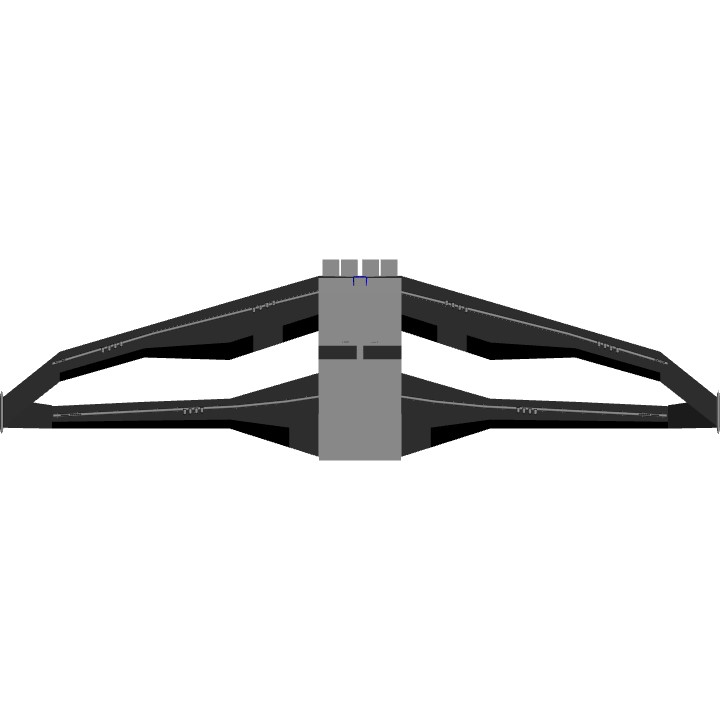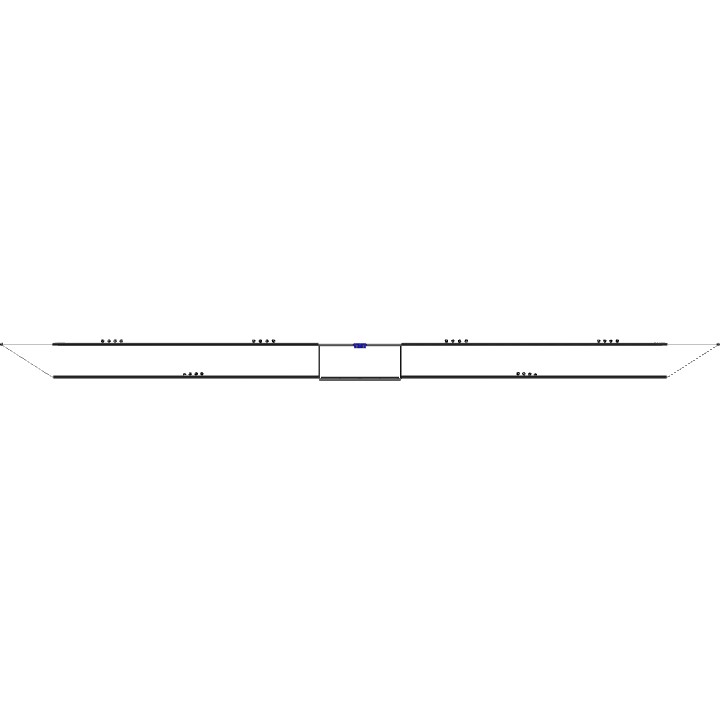The Bismarck-class, predecessor to the Aegis II-class, was the first series of aerial carriers to be fielded into service, after the Megaton AAC.1 proved the aerial carrier strategy to be semi-feasible.
In a technical sense, this is the Bismarck III-class, the Bismarck I prototype being scrapped for comically hilarious wing flutter (for using Primary Wings rather than sturdier Structural Wings), and Bismarck II being scrapped too, for abhorably poor control in all three axes, and persistence of wing flutter.
The Bismarck-class has a 200-foot runway perfect for landing and storage of six Phantom FB.1 or Dart Mk.IM fighters, or two Falcon LB.1 light bombers in standard configuration, with many possible overload configurations. It features blockage doors at the front, designed to block airflow into the flight deck when carrying aircraft in transit. Its' blockage doors can be controlled with VTOL controls.
Unlike its' successor, the Aegis II-class, it is unarmed, and also was not designed for medium or heavy bombers' use. Keep an eye on your notifications! Aegis II-class "Moby Dick" is coming soon to a SimplePlanes hangar near you!
Specifications
Spotlights
- JohnnyBoythePilot 6.9 years ago
General Characteristics
- Created On Windows
- Wingspan 710.3ft (216.5m)
- Length 198.5ft (60.5m)
- Height 40.8ft (12.4m)
- Empty Weight 501,408lbs (227,435kg)
- Loaded Weight 869,291lbs (394,304kg)
Performance
- Power/Weight Ratio 0.558
- Wing Loading 12.8lbs/ft2 (62.3kg/m2)
- Wing Area 68,127.2ft2 (6,329.2m2)
- Drag Points 297757
Parts
- Number of Parts 591
- Control Surfaces 16
- Performance Cost 2,144







this thing reminds me of something from ace combat.
Cool!
WOW!